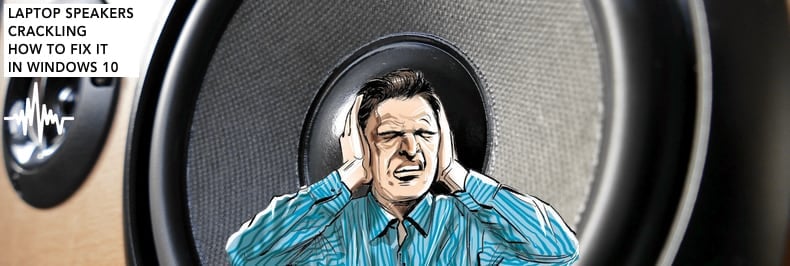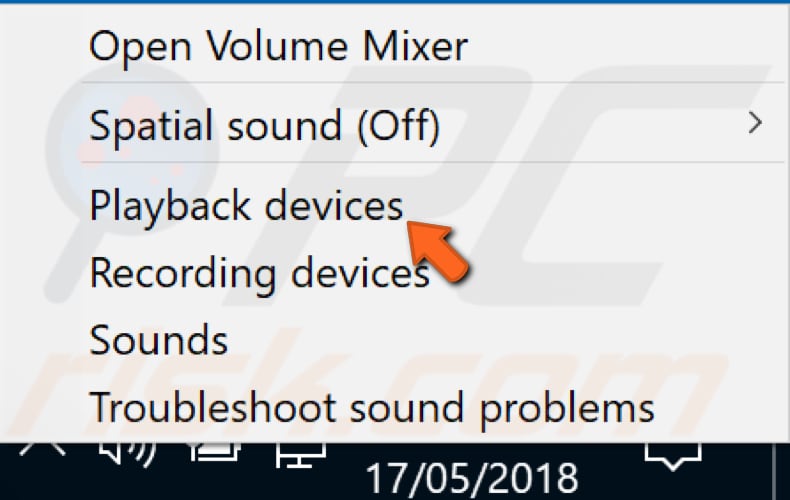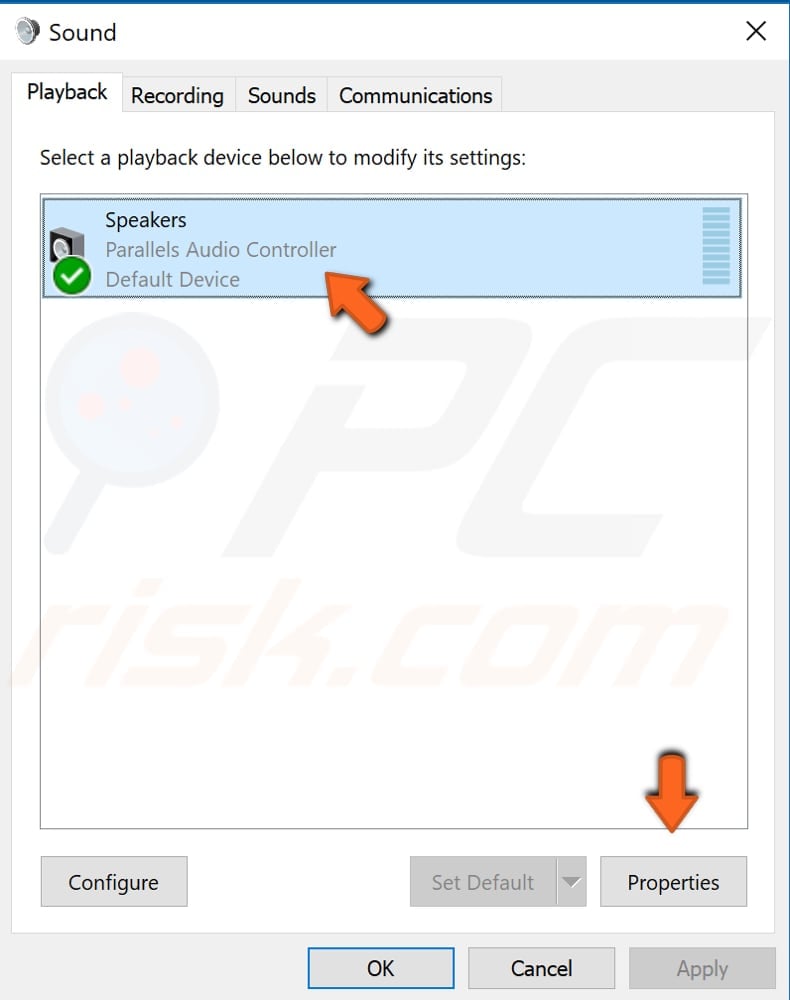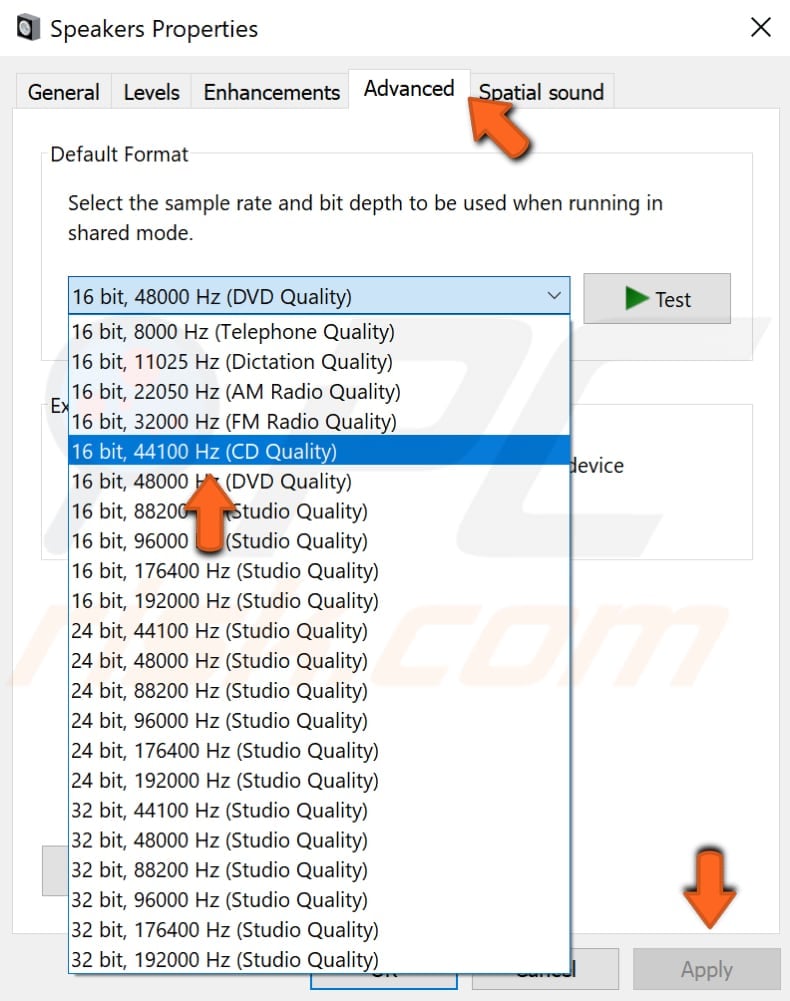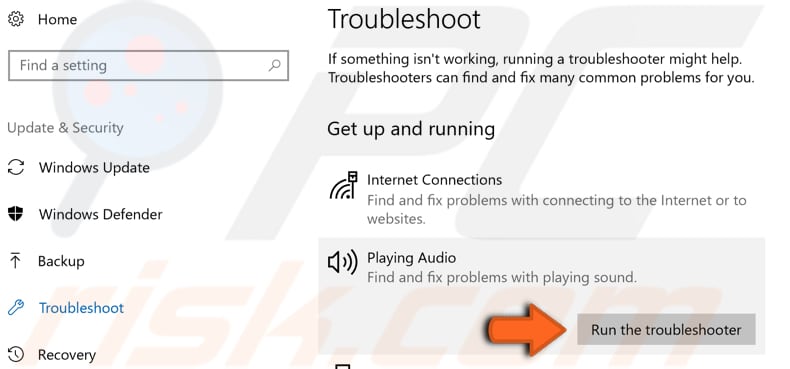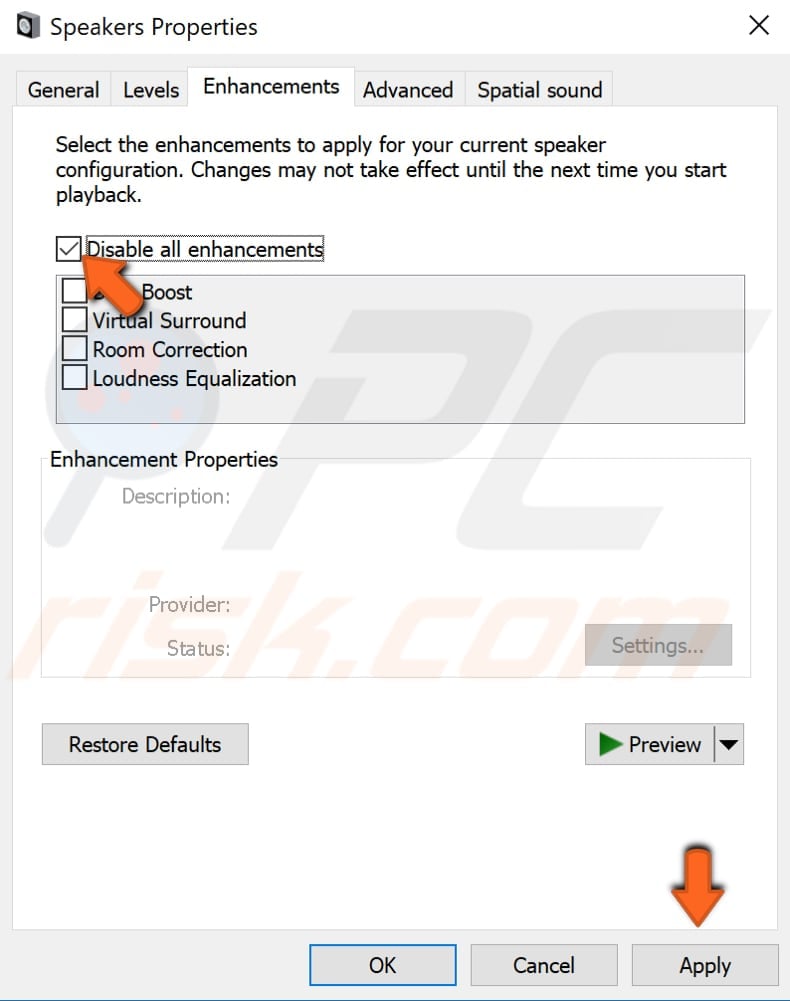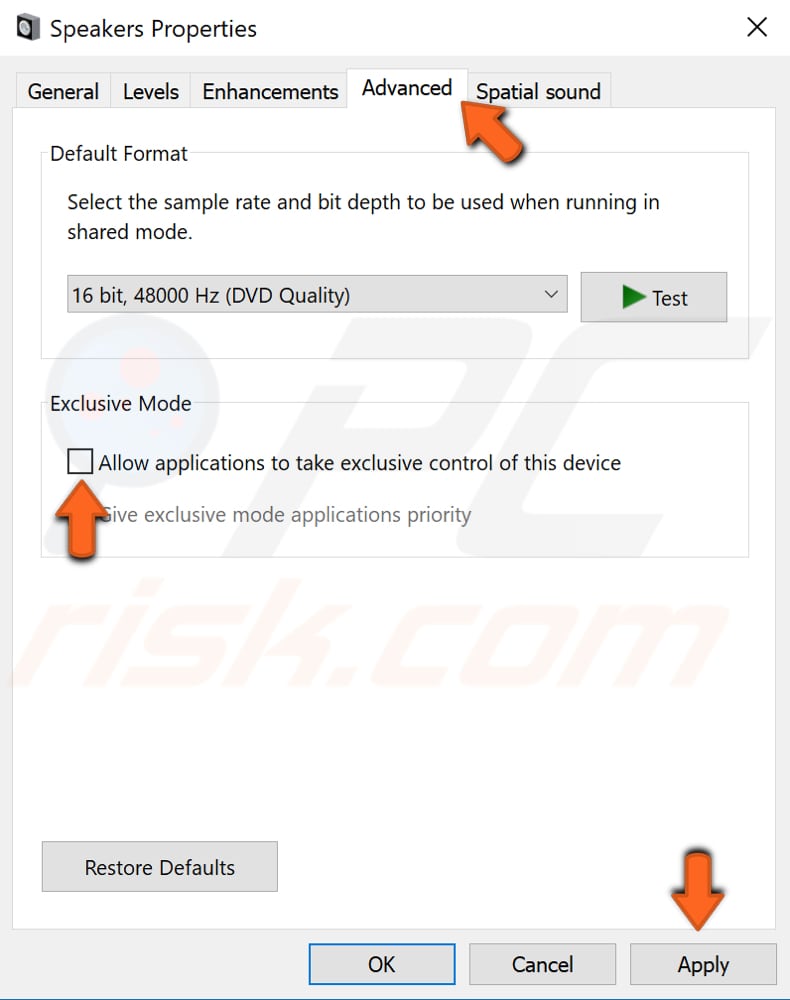- Fix: Audio Crackling Windows 10
- Solution 1: Changing Minimum Processor State
- Solution 2: Changing your Sound Format
- Solution 3: Uninstalling drivers
- Solution 4: Editing the Registry
- Solution 5: Disabling Audio Enhancements and Exclusive mode
- Solution 6: Purchasing a USB to 3.5mm adapter
- Laptop Speakers Crackling. How To Fix It?
- Laptop Speakers Crackling, Popping. How To Easily Fix It In Windows 10?
- Change Sound Format
- Run Audio Troubleshooter
- Disable All Enhancements
- Disable Exclusive Mode
- Update Audio Drivers
- Video Showing How To Fix Crackling Laptop Speakers Problem:
Fix: Audio Crackling Windows 10
Users experience the Audio in their Windows 10 ‘crack’ when playing primarily because of internal system settings. In rare cases, the sound hardware of the computer is the culprit. According to use reports, the audio output was much distorted and had a specific “crackling or popping” sound whenever used. Your audio drivers might not be updated or your processor state needs changing. We will guide you step by step on how to fix all these problems and get your audio up and running in no time.
Solution 1: Changing Minimum Processor State
Your minimum processor state might be causing this issue. Windows 10 has an integrated power saving protocol which minimizes the usage of your processor in order to save energy and prolong battery life. Although this can be a plus point for most of the people, it can affect your audio quality directly. Whenever the processor usage lowers, the audio output isn’t the same and you may experience distortion and bad sound. We will try to set the minimum processor state to 100% and check if this solves the problem.
- Press Windows + S button to bring up your start menu’s search bar. Type “Power and Sleep” in the dialogue box and open the first result.
- Once in the Power and Sleep settings, select “Advanced power settings” option present at the right side of the screen.
- You will see different power plans your computer has. Select the one you are using and click “change plan settings”.
- A new window will come forward consisting of details such as when to turn off the display etc. Ignore all of this and click on “Change advanced power settings” located at the near bottom of the tab.
- Now a small window will pop up consisting of different advanced options that you can change. Navigate through them and locate “Processor power management”. From the subheadings, select “Minimum processor state”.
- Change the value from 5% to 100% in both cases (on battery and plugged in).
- Save changes and exit. Restart your computer and don’t change your computer’s power plan. Keep it where we made the changes. Now check if your audio has improved or not.
Solution 2: Changing your Sound Format
Windows has an option to change your sound quality according to your speakers. You can set CD quality, DVD quality or Studio quality. The frequencies vary in all these options accordingly. The maximum being 192000 Hz with the lowest 44100 Hz. If you don’t have high-quality speakers or the speakers don’t configure correctly, setting high sound quality can cause the popping sound in your audio. We can try changing your sound quality and checking if the problem got solved.
- Press Windows + R button to launch your Run In the dialogue box, type “Control Panel” to launch the application.
- Once in the control panel, type “sound” on the search bar present at the top right side of the screen. Open the options of sound the return in the search result.
- Once the sound options are opened, click on the audio device connected to your computer. Right click and select Properties.
- Select the Advanced tab present at the top of the screen. Here you will see a section of “Default Format”. Click it and a drop down will appear.
- Select CD quality (the first option present) and save changes.
- You might want to restart your computer even though the effects are immediate. Check if your issue is fixed.
Note: You can always try changing the sound formats to different values and keep checking if this solved your problem.
Solution 3: Uninstalling drivers
There can also be an issue of your sound drivers not properly installed or being outdated. Drivers are at the very core of your sound quality. They relay information to your speakers and are practically running your speakers and producing the sound. We can try updating them through reinstallation and checking if the problem gets solved.
- Press Windows + R button to bring up the Run application on your computer. In the dialogue box type “devmgmt.msc”. This will launch your computer’s device manager.
- All connected devices to your computer will be listed here according to a category. Click on the category of “Audio inputs and outputs”
- Right click on Speakers and select Properties.
- Click on Driver tab present at the top of the screen. Here you will see an option to uninstall your sound driver. Click it.
- Now Windows will confirm your action. After confirming the driver will be uninstalled from your system.
- Restart your PC Upon the restart, Windows will install the default drivers for your speakers.
- Head over to the sound options just like we did. Right click on Speakers and open its properties.
- Now click on the option of “Update Driver”. Windows will prompt you to either install the drivers manually or automatically. Select automatically and let Windows search and install the drivers.
- Check if your sound quality improved.
Solution 4: Editing the Registry
We can change registry settings on your computer and check if it brings any improvement to the sound quality. Your sound chipset powers down after a specified time of inactivity to save power and conserve energy. This can be the likely cause of the popping sound and the high pitched tone. You can easily configure this by editing the registry settings.
- Press Windows + R to bring up the Run application. In the dialogue box, type “regedit”. This will launch your PC’s registry so you can edit it accordingly.
HKEY_CURRENT_USER\Software\Realtek\RAVCpI64\Powermgnt
- The settings are as following:
Delay time: It is the time in seconds which triggers the powering down of the chipset. The default value is 10.
Enabled: This option enables the power management. The default value is 0. You should set it to 1 to disable and prevent the popping sounds coming.
Only Battery: If your power management is enabled, you should set this setting to 1 to disable the power management only when the laptop is plugged in. You will still be able to hear the popping sounds if your laptop is on battery.
Solution 5: Disabling Audio Enhancements and Exclusive mode
Some sound drivers use enhancements in an attempt to improve your sound quality. If these properties are not compatible or if your CPU is being overloaded a lot, this can result in some major problems. We can try disabling the audio enhancements and check the sound quality gets better. Not all sound drivers perform this function. They may have the Enhancements tab renamed as a sound blaster. In that case, we can try disabling all the effects to the audio.
Some sound drivers also have an issue with the “Exclusive mode” option which allows other applications to take full control of your sound card. This shouldn’t be a problem but it is worth a try to see if this fixed our problem.
- Press Windows + R button to launch your Run In the dialogue box, type “Control Panel” to launch the application.
- Once in the control panel, type “sound” on the search bar present at the top right side of the screen. Open the options of sound the return in the search result.
- Once the sound options are opened, click on the audio device connected to your computer. Right click and select Properties.
- Now head over to the Enhancements tab and uncheck all the enhancements enabled (you can also check the box which says “Disable all enhancements”).
- Now select the Advancedtab and uncheck the exclusive mode where applications are allowed to override the settings. Save your changes and exit.
Note: If this doesn’t bring any change you can always turn all these options back on.
Solution 6: Purchasing a USB to 3.5mm adapter
If you are experiencing popping sounds on your external speakers, it might be possible that your audio jack is damaged or isn’t working as expected. You can purchase a USB to 3.5mm jack. You plug one end of the cable into the USB slot on your computer and the end will be connected to your audio device. This way Windows will automatically detect that an external speaker is connected and we can bypass your audio jack this way.
Laptop Speakers Crackling. How To Fix It?
Laptop Speakers Crackling, Popping. How To Easily Fix It In Windows 10?
Loud crackling or popping noises from speakers or headphones can be annoying and a sign that something is wrong with the system. They are usually the result of connection problems — often, bad wires causing interference. Crackling, popping, noises, and audio problems can occur for a number of reasons and we recommend that you check the hardware. Check if there are any loose or damaged wires, bad connections, etc.
If you have checked all connections and wires, and the sound is still crackling and you hear noises, system settings might need adjusting. Sound problems can also be caused by incorrect settings, outdated or faulty sound drivers, or interference with certain hardware. In this guide, we run through some steps that can resolve these problems. Bear in mind that there are many potential reasons for these problems, but try all methods outlined below to find a solution on your system.
Table of Contents:
It is recommended to run a free scan with Malwarebytes — a tool to detect malware and fix computer errors. You will need to purchase the full version to remove infections and eliminate computer errors. Free trial available.
Change Sound Format
The most common fix for crackling sounds is to change the Windows default sound format. Many users have reported that this simple procedure solved the problem. To change the sound format, right-click the speaker icon in the Taskbar and select the «Playback devices» option from the contextual menu.
The Sound window will appear and you will be automatically directed to the Playback tab. Select the default audio device that you use for playing audio and click «Properties».
In the Speaker Properties window, select the «Advanced» tab and select the sample rate and bit depth to be used under «Default Format». Select the «16 bit, 44100 Hz (CD Quality)» format and click «Apply» to save the changes and «OK» to exit the Speaker Properties window. See if this solves the crackling sound problem . If you still hear popping and crackling noises, try other sound formats.
Run Audio Troubleshooter
Windows includes a number of troubleshooters designed to quickly diagnose and automatically resolve various computer problems. Troubleshooters cannot fix all problems, but they are a good place to start if you encounter a problem with your computer, operating system or connected devices. To start troubleshooting, go to Settings and type «troubleshoot», and then select «Troubleshoot» from the list.
Now find «Playing Audio» under ‘Get up and running’ and select it. Click «Run the troubleshooter» and follow the instructions. Windows will try to find and fix sound problems. See if this fixes the crackling sound problem.
Disable All Enhancements
There are many different sound drivers, some of which might use software enhancements designed to improve sound quality. Ironically, some can cause sound problems such as crackling and popping if they are not working properly. To disable sound enhancements, right-click the speaker icon in the Taskbar and select the «Playback devices» option from the contextual menu. Select the default audio device that you use for playing audio and click «Properties». In the Speakers Properties window, select the «Enhancements» tab and ensure that none of the enhancements are enabled, or simply tick the «Disable all enhancements» checkbox and click «Apply» to save the changes. See if this fixes the crackling sound problem.
Disable Exclusive Mode
It is possible that there is a feature enabled that allows applications to take exclusive control of your audio device. This can sometimes interfere with the audio driver and cause crackling or popping sound problems. To disable this option, follow the same steps and select the «Advanced» tab in Speakers Properties (as when changing the sound format). Now find the «Allow applications to take exclusive control of this device» option and un-tick the associated checkbox. Click «Apply» to save the changes and see if this solves the crackling sound problem.
Update Audio Drivers
A device driver is software that informs the operating system and other software how to interact with particular hardware. It is rather like a translator between software and hardware, since they often are created by different manufacturers, companies, or people. The driver facilitates smooth communication between hardware and software. In most cases, computers are unable to send and receive data correctly without drivers. If the appropriate driver is not installed, the device might not function properly. To an reinstall audio driver, use Device Manager. To open Device Manager, right-click the Start button and select the «Device Manager» result from the contextual menu or type «device manager» in Search and click the «Device Manager» result.
In Device Manager, you will see a list of devices connected to your computer. Find the «Sound, video and game controllers» section and expand it by clicking the arrow beside it or simply double-clicking it. Then, right click the audio device and select «Update driver» from the contextual menu.
You will be asked if you want to search for updated driver software automatically or to browse your computer for driver software. If you select the first option, Windows will search your computer and the Internet for the latest driver software for your device. If you select the second option, you must locate and install the drivers manually. Using this option requires having previously downloaded the driver on your computer or USB flash drive. We recommend that you select the first option and follow the instructions. If the first option does not solve the problem, download the latest audio drivers for your device from the manufacturers’ websites.
If updating drivers does not fix the problem with crackling sound, reinstall them. To reinstall drivers, follow the same steps and select «Uninstall device» rather than «Update driver». Ensure that you check the «Delete the driver software for this device» checkbox, if there is one. Restart your computer. Windows will automatically install the missing drivers the next time you start Windows.
If you wish, you can use third-party software to update drivers automatically. In this case, we recommend the Snappy Driver Installer. Snappy Driver Installer (SDI) is a powerful free driver updater tool for Windows that can store its entire collection of drivers offline. Having offline drivers gives Snappy Driver Installer the ability to have access to fast driver updates, even if there is no active Internet connection on your computer. Snappy Driver works with both 32-bit and 64-bit versions of Windows 10, Windows 8, Windows 7, Windows Vista, and also works with Windows XP. Drivers are downloaded through Snappy Driver Installer in ‘driverpacks’, which are simply collections (packs) of drivers for various hardware such as sound devices, video cards, network adapters, etc. It can also show duplicate drivers and invalid drivers. It separates the updates that require you to restart your computer so that they are easier to distinguish. You can download Snappy Driver Installer from here.
These are the most common fixes for this type of audio problem. Hopefully, one of them removed the crackling noises on your system. If you know of other solutions to this problem, not mentioned in our guide, please share them with us by leaving a comment in the section below.










